Chakra is a Sanskrit term that translates to “wheel.” Chakras were used as many types of energy in ancient India. It is the human body’s focal point, which is employed in meditation. Mantras and meditation can activate the seven primary chakras in the human body. Mantras and mudras are specific to each chakra. To open the chakras, you’ll need the correct mantras and mudras. But first, you must understand what a chakra is and how it functions.
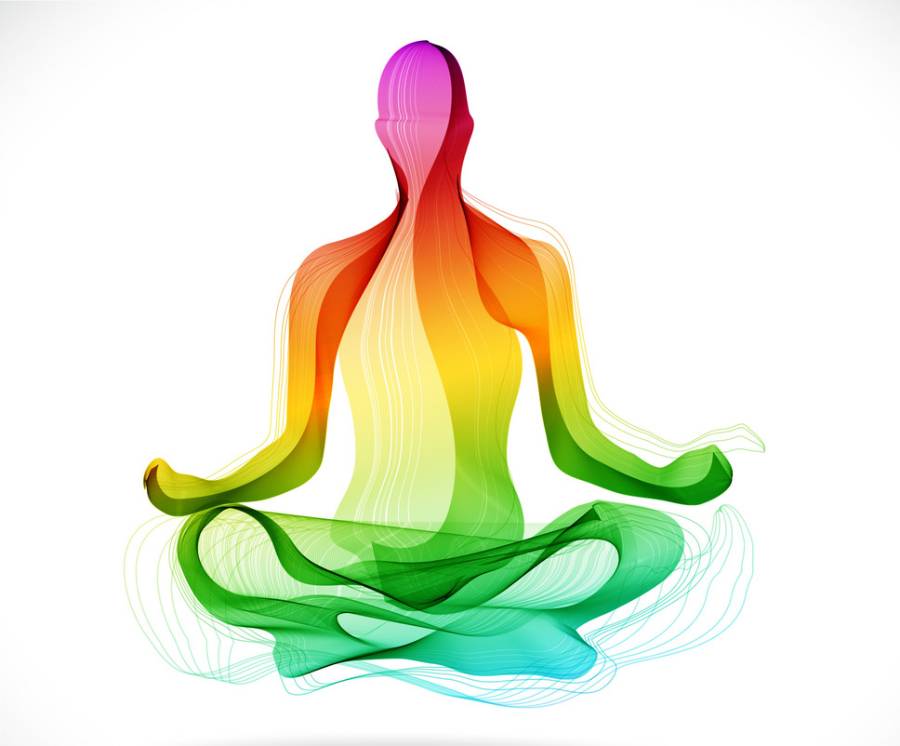
The seven chakras meditation are known to have great powers to improve your mind-body connection, and they must be activated in order to reap their benefits. It is critical that you learn about the seven chakras in order to gain a better understanding of your mind and body.
Some people may find the 7 chakras to be a very complex topic, so it is best to approach the learning of the 7 chakras in a simple and practical manner. You should be aware that the human body has its own energy and that everyone has different energy levels. This is why people can have good or bad vibes or react differently to different situations.
Furthermore, the body’s energy is filtered through certain power centres that allow energy to flow freely through your body, and these power centres are known as the Chakras. There are seven Chakras in your body, each with its own purpose and benefits.
The Chakra centres begin with the Root Chakra, also known as Muladhara, at the base of your spine and end with the Crown Chakra at the top of your head. With the help of specific meditation exercises, all seven chakras can be activated or energised. Check out this blog by
WHAT ARE THE NAMES OF THE SEVEN CHAKRAS?
The 7 Chakras are as follows:
- The Root Chakra or Muladhara
- The Sacral Chakra or Svadhishthana
- The Solar Plexus Chakra or Manipura
- The Heart Chakra or Anahata
- The Throat Chakra or Vishuddha
- The Third Eye Chakra or Ajna
- The Crown Chakra or Sahasrara
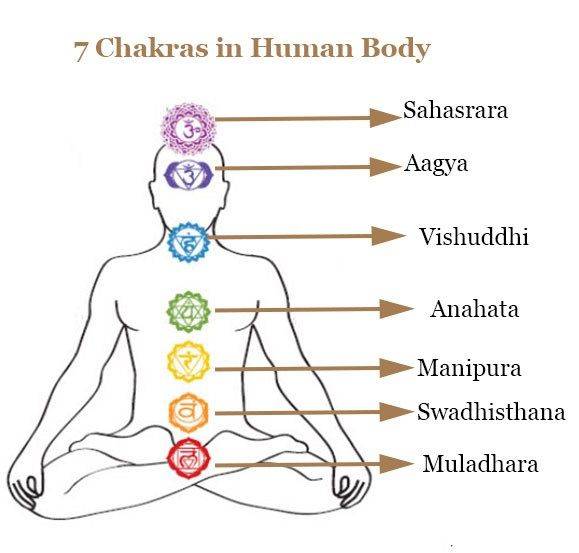
HOW TO ACTIVATE THE SEVEN CHAKRAS IN OUR BODY THROUGH THE SEVEN CHAKRA MEDITATION
#1. Muladhara, or the Root Chakra
It is critical to activate your Root Chakra if you want to live a balanced and happy life. The Root Chakra is a foundational Chakra located at the base of your spine. When the Root Chakra is balanced, you will feel secure, calm, and happy, whereas when it is out of balance, you may feel anxious, angry, depressed, nervous, or fearful. This chakra is associated with the colour red.
The Muladhara chakra is concerned with the body’s purely physical, atomic structure. As a result, its energies are concerned with healing, correcting, and empowering the body’s cells and organs. This chakra’s positive energies manifest as insight into all material phenomena and independence from them; negative energies manifest as totally material perceptions and impulses toward avid attachment to material things and disbelief in anything higher than matter.

How do I open the Root Chakra (Muladhara)?
Begin by stretching, then close your eyes and sit in a chair or anywhere comfortable.
Touch the tip of your index finger to the tip of your thumb, begin breathing slowly and deeply, and focus on the Root Chakra, located between the genitals and the anus. Don’t forget to chant “LAM” and keep going until you feel relaxed.
#2. Svadhishthana, or Sacral Chakra
Svadhisthana is the second chakra. Pleasures will take precedence in your life if your energies are dominating in svadhisthana. The Sacral Chakra is the chakra of graciousness, pleasure, and selflessness, and it is located directly beneath the navel. Moving up to Sacral meditation aids in the enhancement of happy feelings and sexuality. It assists you in making better connections with those around you; however, if it is unbalanced and under-active, you will become unemotional and insensitive, as well as very conservative.
Swadhishthana chakra is concerned with neurological energies, emotions, and desires, including sex/lust. It encompasses all of a person’s self-centeredness and egotism. Its purification corrects those aspects of our physical and emotional lives. It also deals with fluids in the body, such as lymph and blood, when there is an abnormality in them. This chakra’s positive energies manifest as gentleness, sensitivity to others’ feelings, helpfulness, and even self-sacrifice; negative energies manifest as negative emotions such as anger, resentment, hatred, jealousy, envy, and–most importantly–lust.

How do I open the Sacral Chakra (Svadhishthana)?
Sit on your knees with your back straight and your hands in your lap, palms facing upwards, to activate the Sacral Chakra. Begin gently breathing and chanting “VAM” to the Sacral Chakra in your lower abdomen, about one or two inches below the Navel. Repeat this process until you are completely relaxed.
#3. Manipura, or the Solar Plexus Chakra
This is the third chakra, also known as the power chakra, and it aids in the transformation of energy into physical form, which is beneficial for digestion and hormonal balance. When this chakra is balanced, you will feel empowered and all of your intentions will be fulfilled. This chakra, which is located in your stomach or upper abdomen, gives you a lot of confidence and control.
The Manipura chakra is concerned with the body’s metabolism and assimilation abilities. It, too, is concerned with desires, particularly the urge to obtain, control, and encompass. It also has something to do with the digestive system. So they are the elements of a person that this chakra’s adjustment can influence. Negative energies appear as greed, possessiveness, negative ambition, and materialistic involvements; positive energies manifest as strength of will and purpose, as well as a highly developed sense of order and good conduct.
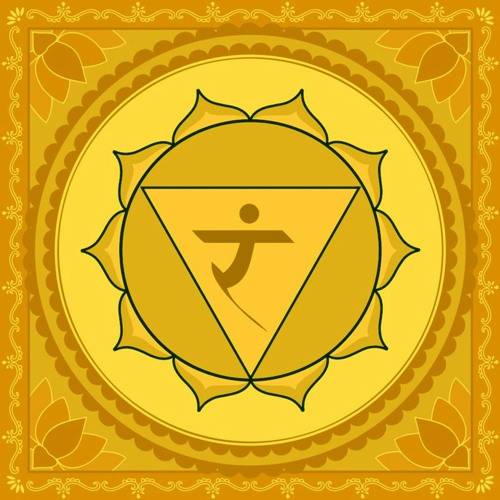
How do I open the Solar Plexus Chakra (Manipura)?
Sit on your knees with your back straight and your hands in front of your stomach, slightly below the solar plexus, to activate the Solar Plexus chakra. Now, join the tips of your two hands’ fingers, all pointing away from you, cross your thumbs, and straighten your fingers. Breathe slowly and deeply, then concentrate on the Solar Plexus chakra, which is located slightly above the navel, and chant the sound “RAM” while visualising a yellow light or flower.
#4. Anahata, or the Heart Chakra
It is located in the centre of the chest and, with proper meditation, it allows us to love others as well as ourselves. This chakra strengthens the qualities of love, compassion, and empathy, and when it is balanced, it is very soothing, warm, and nourishing.
The Anahata chakra governs metabolism and the cardiovascular and respiratory systems. It, too, is concerned with emotions, but these are sensations of higher attachment and selflessness. (Because it is still on the lower levels, do not misinterpret its movements as genuine or spiritual love or devotion to God.) It also deals with the visual faculty, which is responsible for basic perception and intuition. It controls the thymus gland in the centre of the chest and has a lot to do with the immune and circulatory systems. This chakra’s positive energies manifest as loving-kindness, generosity, and selfless activities for the benefit of others; negative energies manifest as a desire to dominate people and use them for selfish purposes.

How to Open the Heart Chakra (Anahata)
Sit in a chair with your eyes closed and your legs crossed, and use both hands to touch the tips of your index and thumb. Breathe deeply and focus on the heart chakra, which is located in the same position as the heart. While doing so, chant the sound “YAM” several times with a sense of relaxation, joy, and love. You can imagine an emerald green light growing brighter and stronger with each chant during meditation. Continue meditating until you feel at ease.
#5. Vishuddha (Throat Chakra)
Although the throat chakra is located in the throat, it aids in the control of your hearing power. It is the chakra of communication and balance, and it improves self-expression and listening skills. If it is out of balance, it releases stored-up negative thoughts, so it must be activated to feel comfortable and overcome weaknesses and fears. The throat chakra increases creativity as well as your listening ability or needs to hear other people’s points of view. Furthermore, this chakra regulates the flow of hormones as well as all throat and head functions.
The Vishuddha chakra is concerned with intellectual growth and the ability to communicate. It also regulates the thyroid gland. To some extent, the will is also involved. Higher intuition also plays a role here to some extent. Negative energies manifest as foolish, meaningless words, lies, manipulative, and negative, harmful speech; positive energies manifest as wise, uplifting, and healing speech, words that have the power to manifest what is being spoken; positive energies manifest as wise, uplifting, and healing speech, words that have the power to manifest what is being spoken; negative energies manifest as foolish, meaningless words, lies, manipulative, and negative, harmful speech.

How to Awaken the Throat Chakra (Vishuddha)
Sit on your knees with your back straight and your eyes closed and focus on the Throat Chakra, which is at the base of your throat. Breathe slowly and deeply while repeatedly chanting the sound “HAM.” You can imagine a blue light becoming brighter and brighter, and you will feel energy flowing through each of the four previous chakras and up to your throat.
#6. Ajna, or the Third Eye Chakra
This Chakra is located between your eyes on your forehead and is commonly referred to as the ‘brow chakra.’ This Chakra is very important for you if you want to improve your focus and create a positive mindset. Those who meditate or activate the third eye chakra feel less overwhelmed by uncontrollable life events, stress, and anxiety. It is also known as the centre of wisdom and intuition, and it assists you in focusing and making wise decisions.
All of the functions of those beneath the Ajna chakra are controlled, coordinated, and shared by the Ajna chakra. It focuses on spiritual intuition and spiritual will in particular. Negative energies manifest as chaotic or negative psychic experiences, as well as whimsical, capricious, and negative applications of will; positive energies manifest as clear intuition, spiritual perceptions, and spiritual will power; negative energies manifest as chaotic or negative psychic experiences, as well as whimsical, capricious, and negative applications of will.

How to Open the Third Eye Chakra (Ajna)
Sit cross-legged or on a chair with your back straight and your eyes closed. Slow, deep, and relaxing breathing is required. Concentrate on your Third Eye Chakra, which is located on your forehead slightly above the centre of your two brows, and chant “OM.” Chanting and focusing on the indigo colour becoming brighter and stronger will relax you.
#7. The Crown Chakra, also known as Sahasrara
This is the seventh chakra (the highest chakra is located on top of the head), and it is used to connect with pure consciousness. When activated, it provides awareness and knowledge while also keeping the body spiritually connected to the divine. Sahasrara is also known as a cosmic bridge, but when it is out of balance, it causes depression, boredom, frustration, and greed.
The energies of the Sushumna crown chakra are purely spiritual and unconditioned by any influences other than our finite spirit and the Infinite Spirit from which we derive our very existence. So there is never any trouble there. It need only be reached and empowered by the Kundalini to establish the precedence of these holy powers over the lower levels of our existence.
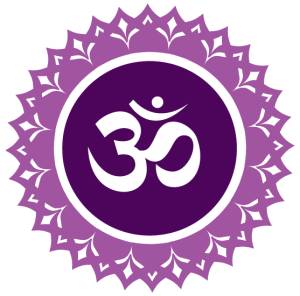
How to Awaken the Crown Chakra (Sahasrara)
Sit cross-legged or on a chair with your back straight and your eyes closed to activate the crown chakra. Breathe slowly and deeply while focusing on the Crown Chakra on top of your head and chanting the sacred mantra “OM.”
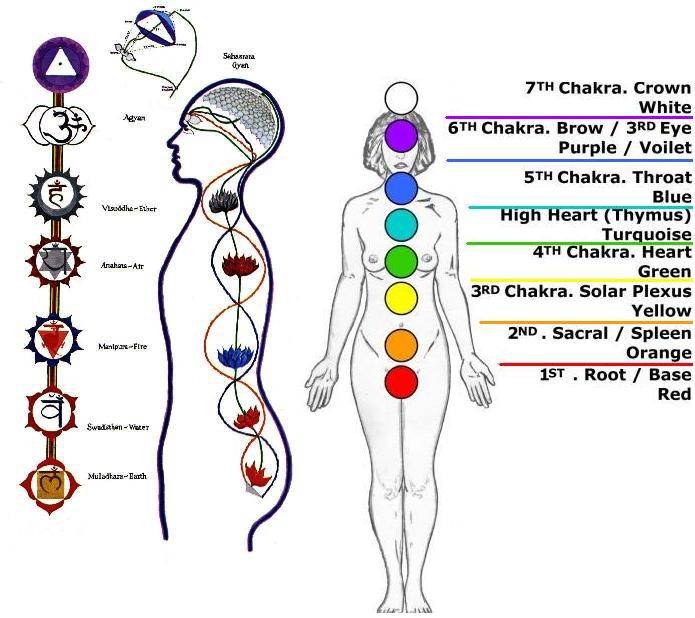
What are Chakras, according to Indian traditions?
They appear as 114 nadis junctions or confluences. The nadis are the energy body’s prana conduits. These intersections are always shaped like triangles. Chakras represent movement from one dimension to another, and the word “chakra” means “wheel” or “circle” in Sanskrit. They are, however, triangles.
These seven dimensions are commonly referred to as the chakras, and they serve as the foundation for the seven schools of yoga.
Two of the 114 chakras are external to the human body. Only 108 of the remaining 112 can be worked on, with the remaining four flowering as a result.
Because it is an important number in the formation of the solar system, the number 108 has appeared in the human system. The earth’s distance from the sun is 108 times that of the sun’s diameter. The diameter of the moon is 108 times the distance between the earth and the moon. The sun has a diameter of 108 times that of the earth. As a result, the number 108 is significant in a variety of spiritual traditions.
Two of the 114 chakras are external to the human body. Only 108 of the remaining 112 can be worked on, with the remaining four flowering as a result.
Each of the 112 chakras is organised into seven dimensions, each with sixteen facets. Instead of getting into 112, which is a large number for many people, only seven were commonly discussed because of these seven categories or dimensions. These seven dimensions are commonly referred to as the seven chakras, and they serve as the foundation for the seven schools of Yoga.
Chakras range from 112 to 7.
Only twenty-one chakras in a person’s body must be active in order for them to enjoy a full physical and social life. The number seven is also associated with these twenty-one chakras.
There are seven sets, each with three chakras that act as one, due to the three dimensions of energy of Pingala, Ida, and Sushumna. You will be whole if all twenty-one chakras are working physically, psychologically, and emotionally. However, you will be a cripple in terms of energy.
Only twenty-one chakras in a person’s body must be active in order for them to enjoy a full physical and social life. The number seven is also associated with these 21 chakras.
The rest of the chakras must be energised if other dimensions are to become a living reality. Energy must be used to fuel intelligence. A sleeping intelligence, on the other hand, is as good as non-existent.
A computer that won’t power on is the equivalent of a slab of stone. This is also true of the human system. This is a supercomputer, but most people are simply keeping it running on a survival level.
You will be whole if all twenty-one chakras are working physically, psychologically, and emotionally. However, you will be a cripple in terms of energy.
Activation is required if more of what the human system is capable of is to be realised. Hatha Yoga is a discipline that stimulates the entire body. Unfortunately, many individuals mistake Hatha Yoga for an exercise or a wellness routine.
Yoga is never about treating something. We’re only interested in how this physical system can be fully realised. Everything will be OK if it is fully functional. It will stimulate something that, in and of itself, will lead to a healing process.
The Names And Locations Of The Seven Chakras
Muladhara is the name given to the seven basic chakras, which are located at the perineum, the area between the anal outlet and the genital organ. Swadhisthana is located just above the genital organ; manipuraka is located just below the navel; Anahata is located just under where the rib cage meets; vishuddhi is located at the pit of the throat; Ajna is located between the eyebrows, and Sahasrara is located between the eyebrows.
Chakras are Multi-dimensional in Nature
Chakras are multi-dimensional in nature. Their physical existence is one dimension, but they also have a spiritual dimension. We can talk about lower and higher energy centres, although this terminology is frequently misconstrued. It’s like comparing a building’s foundation to its roof. The base is not superior to the roof. The base of the structure is more important than the roof. The foundation, rather than the roof, is responsible for the building’s quality, longevity, stability, and security. However, the roof is higher and the foundation is lower in terms of language.
Food and sleep will be the most important aspects in your life if your energies are prominent in muladhara. Food and sleep will be the most important aspects in your life if your energies are prominent in muladhara. Chakras are multi-dimensional in nature. Their physical existence is one dimension, but they also have a spiritual dimension.
This implies that they have the ability to be entirely altered. The same muladhara that seeks food and sleep, for example, can become completely free from the process of eating and sleep

Aspects Of The 7 Chakras In The Body That Are More Subtle
These chakras have physical manifestations. They also have more subtle manifestations.
if the correct kind of awareness is brought to it. Kshetras are the names given to these appearances. The word kshetra refers to a place where someone lives. You may be working in your workplace, but your home is somewhere.
If you attain to ajna or If your energies are dominant in ajna, then intellectually, you are realized. Intellectual realization gives you peace. Experientially it has not happened yet but intellectual realization has come to you, which brings you to a certain state of peace and stability within yourself irrespective of what is happening outside of you. And once your energies hit sahasrara, you are simply ecstatic like crazy! There is no external stimulant, there is simply no reason, but you are ecstatic simply because energies have touched a certain peak.
Or for example, If your energies are dominant in swadhisthana, pleasures will be most dominant in your life – you seek pleasures, you enjoy the physical reality in so many ways. If your energies are dominant in manipuraka, you are a doer; you can do many things in the world. If your energies are dominant in anahata, you are a very creative person. IOn the other hand if your energies are dominant in vishuddhi, you become very powerful.
And when your energies reach sahasrara, you are completely thrilled! You feel ecstatic simply because energies have reached a specific point. There is no external stimulant, and there is no reason. It has not yet happened experientially, but intellectual realisation has come to you, bringing you to a condition of serenity and stability within yourself, regardless of what is going on outside of you.
7 Chakras, 7 Intensity Levels
Any spiritual path can be described as a journey from the muladhara to the sahasrara at its most basic level. This voyage is a progression from one dimension to the next; there are only seven levels of intensity in total.
Any spiritual path can be described as a journey from the muladhara to the sahasrara at its most basic level.
There are various spiritual procedures and ways to move your energies from muladhara to ajna, but there is no path from ajna to sahasrara. There is no one-size-fits-all approach. Either jump or fall into a bottomless abyss are the options. “Falling upward” is the term for this.
You won’t get there unless you’re willing to fall upward, according to Yoga. Because they got stuck in ajna, a lot of so-called spiritual individuals have reached to the opinion that peace is the best option. Peace isn’t the most likely outcome.
You can feel euphoric to the point that the entire world appears to be a big joke in your perception and experience. Everything that everyone else takes very seriously is a joke to you.
There are various spiritual procedures and ways to move your energies from muladhara to ajna, but there is no path from ajna to sahasrara.
People, on the other hand, come to the ajna and stay for a long time before deciding whether or not to jump. This is why the Guru-shishya relationship — the master-disciple relationship – was traditionally emphasised in spiritual traditions. This is due to the fact that if you must take this leap, you must have complete faith in the Guru. 99.9% of people require trust in order to jump; else, they will be unable to do it. This is why this relationship is given so much weight, because without trust, one will never take that leap.

Intellect And Discernment
These seven chakras or dimensions are a classification system rather than a philosophy. Any classification of life is fundamentally incorrect, yet this classification is made for the benefit of comprehension. The seven chakras are not to be confused with the seven segments of the human body. Life unfolds as a whole whole. The mind, on the other hand, necessitates classification. Your intellect cannot comprehend without classification. The intellect’s nature is to discern. Your intellect is a useless piece of machinery if you don’t have the ability to perceive.
Enlightenment implies that you are illuminated from the inside and are unable to perceive darkness.
Discernment is an essential tool for surviving in the world, but it is not a good thing if you want to swallow the universe, that is, if you want the universe to become a part of you or vanish into you. Which planet would you like to leave out if you were discerning? Discernment is about knowing what you want and don’t want, what you like and don’t like, what is good and what is terrible, and what is high and what is low. What is the difference between god and the devil?
Enlightenment occurs when everything is illuminated in such a way that everything appears to be the same to you. You don’t want to be able to tell anything apart. To you, light and darkness are the same things. For you, there is no distinction. Enlightenment implies that you are illuminated from the inside and are unable to perceive darkness.
Color Isn’t Everything
We’re talking about a dimensionless dimension, but we’re categorising for the benefit of the intellect. You should not begin to take positions such as “I’m the Anahata kind” or “I’m the Vishuddhi kind,” as individuals do when they say “I’m a coffee person” or “I’m a tea person.” “I’m a morning person,” people say when they wake up in the morning.
It’s not about becoming recognised. Different attributes can be discerned if you wish to do specific things. However, there is a dimension known as vairagya or vairaga that can reveal the very nature of existence. “Vai” is a Sanskrit word that means “beyond,” and “raga” is a Sanskrit word that means “colour.” Colourless refers to something that is devoid of colour. In English, the word “colourless” connotes something that is lifeless or lacks vibrance, although vairagya is not colourless in that sense.
We’re talking about colourless in the sense of being devoid of colour. Transparent is something that has no colour. Transparency allows you to see what is going on. It is colourless air that keeps you alive. If the air turned blue, you would no longer be able to see. For a while, you may like the blue colour in the air, but eventually, you will wish to clear the blue and see it again. Having a clear vision means becoming colourless or beyond colour. Colours have no effect on your vision. Many things are identified by their hues, such as rivers like the Blue Nile, Yellow River, and Red River. This does not imply that the water itself is blue, yellow, or red; rather, it is the soil it carries that gives it its colour.
Because you are colourless and without qualities, if you are beyond colour, you can fit into any situation. Now, if the background is blue, you will change blue; if the background is red, you will turn red. You will not be perceived as a source of resistance anyplace. You are completely merged with whatever is present at the time. As a result, we’re talking about seven dimensions or seven hues. There is nothing wrong with refracting light, but if you do it all the time, your perception of life will become skewed.

Conclusion
So, in order to balance your energy and ensure your well-being, all of these chakra systems must be activated, allowing you to organise your life on an all-inclusive level.
Disclaimer: The author’s views are his or her own. The facts and opinions in the article have been taken from various articles and political commentaries available in the online media and Eastside Writers does do not take any responsibility or obligation for them.
Note: Contact our Writers at www.eastsidewriters.com for writing Blogs/Articles on any niche. We have experts in various domains from Technology to Finance and from Spirituality to Lifestyle and Entertainment.
.
Originally posted 2021-10-31 05:53:30.




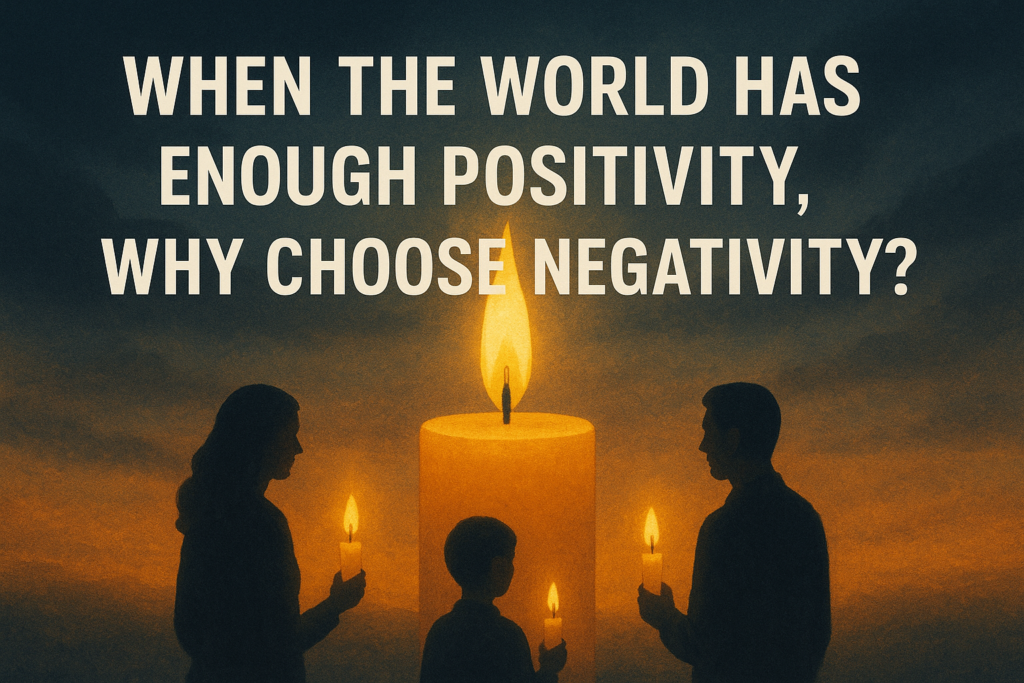


Pingback: THE IMPORTANCE AND CONSEQUENCE OF SUBTLE BODY - Eastside Writers
Pingback: Indian Herbs Having Potential And Proven Benefits To Make Your Liver Healthy - Eastside Writers
Pingback: Why We Perform After-Death Rituals; The Significance Of Shraddha - Eastside Writers
Pingback: Exploring the Seven Chakras: A Guide to Balancing Your Physical, Emotional, and Spiritual Well-Being - Pediamate
Pingback: Why Surya Namaskar - the ancient sun salutation is of great value to Mankind - Eastside Writers
Pingback: Lahiri Mahasaya and the Transcendence of Self through Kriya Yoga: The Powerful Journey to Self-Realization - Eastside Writers
Pingback: The Third Eye or Kutastha: Mysteries and the Importance of Opening It - Eastside Writers
Pingback: The Divine Bow: Unveiling the Mystical Significance and Philosophical Depths of Namaste - India's Ancient Art of Salutation - Eastside Writers
Pingback: The Gateway To Super-Consciousness: The Profound Spiritual Significance Of The Medulla Oblongata - Eastside Writers
Pingback: Breathe Your Way to Enlightenment: Discovering Inner Potential - Eastside Writers